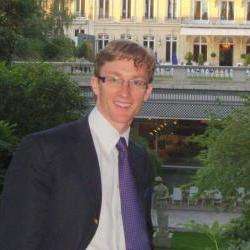A bookie, perusing Friday night’s concert programme of Górecki, Vasks and Shostakovich, and featuring no instantly recognisable soloist or conductor, would have offered generous odds against this concert becoming one of the highlights of 2016. And yet, as Shakespeare neatly puts it, “so may the outward shows be least themselves”. This was a cracking concert with stirring, sumptuous playing all round. Guest conductor Michał Nesterowicz galvanised the NSO to a level of playing I have never before witnessed from this orchestra, while Finnish violinist Elina Vähälä bewitched us with Pēteris Vasks’ mystical Distant Lights.
I had chosen this concert for Shostakovich’s Symphony no. 10 in E minor. Nor did it fail to live up to my expectations. It is the first symphony which Shostakovich wrote as the then USSR was reeling from the death of murderous dictator, Joseph Stalin. Much has been written about the composer’s views on such an event and while we might never know exactly, the music itself gives a good inkling. Conducting without the score, Nesterowicz, his gaunt frame towering above the orchestra, seemed to exert a magnetic pull on every member of the NSO. The sombre mood of the opening was offset by the soft lyrical melody of the clarinet. Flautist Catríona Ryan spun a forlorn melodic web above the grotesque parody of the vamping waltz bassline. The sinister mutterings of the timpani heralded the start of the visceral climax, a climax so overwhelming and disturbing it left you powerless. The ferocity of this music is hard to imagine: it is music that seizes you by the lapels and hurls you back, overpowering all senses. The cacophonous crashing of cymbals, the baying of the brass, the sonic boom of the drums represents humanity’s shriek against the terrors of the Stalinist regime. When at last the tension ebbed, I could feel the thumping of my heart gradually slow down to its normal pace and my muscles relax. Clarinettists John Finucane and Fintan Sutton brilliantly imbued their melody with that uneasy humour of one who might be caught at any stage by the politburo. A lonesome piccolo melody and an evocative pizzicato brought the first movement to a close.
The thumping string ostinato started the scherzo which bristled with urgency. The percussion section captured the military character well while the music surged forward with a demonic if orderly intensity. What impressed most was the precise rhythmic control of conductor Nesterovicz as he whipped the orchestra to a frenzy, keeping us on the edge of our seats.
The third movement came as a much-needed relief with its plaintive oboes and meditative horn calls. And yet the miasma of uneasiness never quite leaves this symphony; the violins’ pizzicato had a sinister quality while the cor anglais’ lyrical melody was tinged with edginess. Once again the climax was terrifying, underpinned by a chord that seemed like the musical equivalent of Edvard Munch’s The Scream.
The finale opens introspectively, Matthew Manning imbuing his solo with a peaceful sadness; a peace that might come in the middle of a destructive hurricane. The uncanny silence which the NSO was savouring was shattered by bright strings and a cheeky clarinet melody. The relentless rhythm propelled the music to its inevitable climax ending with the final iteration of the composers initials D-S-C-H on blazing horns and timpani.
In the first half, Finnish violinist Elina Vähälä gave a ravishing account of Pēteris Vasks’ Distant Light, a five-sectioned Concerto for Violin and String Orchestra. Shimmying up to the top registers of the violin, Vähälä unfurled the delicate tendrils of her melody while the diaphanous orchestral colours shimmered delectably in the background. Each of the three cadenzas tests the soloist’s ability with increasing difficulty. Vähälä dispatched all three with great bravura, even the brutally difficult third cadenza with its fiendish tenths descending chromatically and frenetic crossing of strings from the highest register to the lowest pushing the violinist’s technique to beyond the realm of ordinary mortals. It was clear what a sensitive musician Vähälä is, listening to and matching her tone to the sepulchral tones of the lower strings in the cantabile section, or imbuing her stratospheric octaves with passionate intensity. The quiet stillness of the opening returned at the end, the hushed trills disappearing into the ether.
Nesterowicz captured the spirit of fellow nationalist composer Henryk Górecki’s Three Pieces in the Old Style. The music of the first piece rose like mist from the ground with little swells of crescendo. The second, with its vigorous accents and rustic swing, bobbed along jauntily while the peace of the chant of the third was interrupted by waves of sounds and trills.


